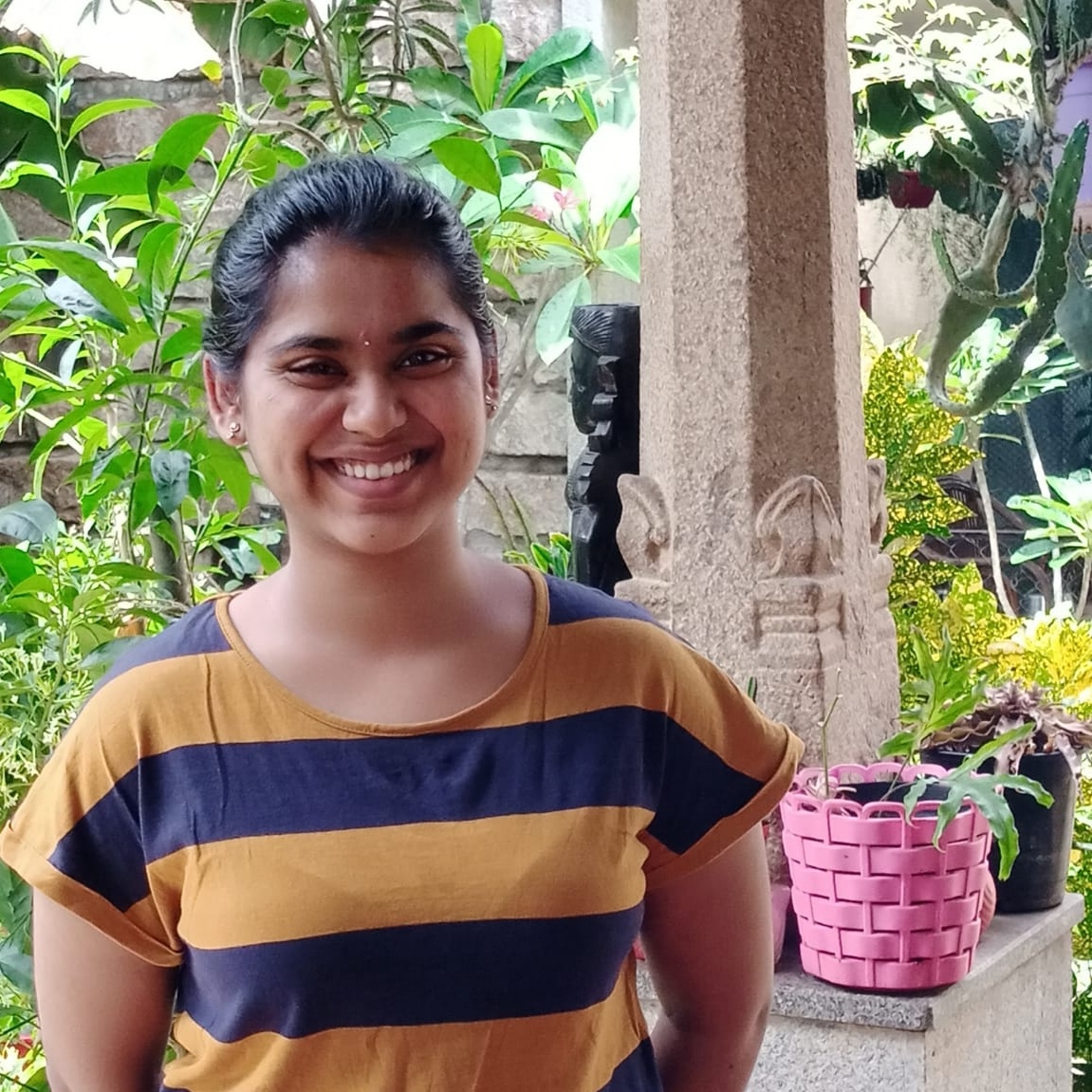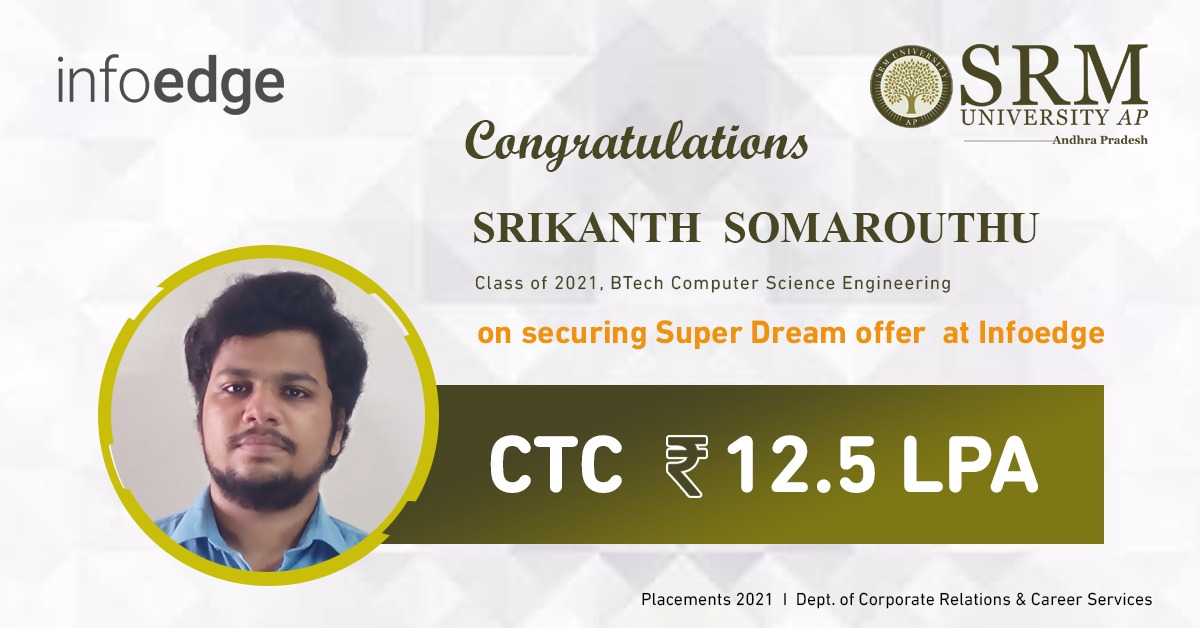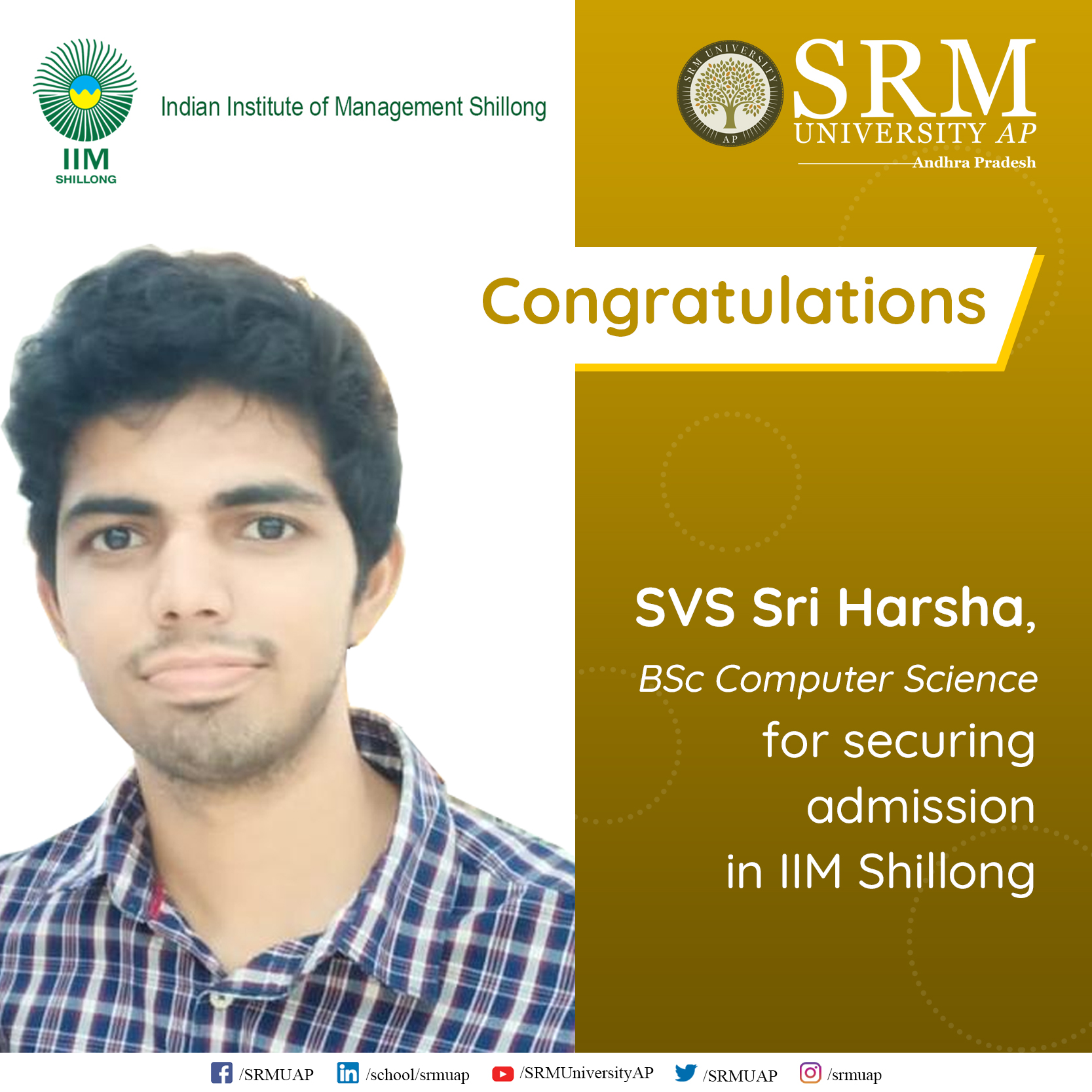Physics student files patent
 Ms Sreelekha Bhuvaneswari, a BSc physics final year student, in SRM University AP, Andhra Pradesh, filed a patent for her work titled “A fibre material with moisture retention capacity with thermal tolerance and a method for manufacture” under the guidance of Dr Sabyasachi Mukhopadhyay, Assistant Professor, Department of Physics, SRM University-AP.
Ms Sreelekha Bhuvaneswari, a BSc physics final year student, in SRM University AP, Andhra Pradesh, filed a patent for her work titled “A fibre material with moisture retention capacity with thermal tolerance and a method for manufacture” under the guidance of Dr Sabyasachi Mukhopadhyay, Assistant Professor, Department of Physics, SRM University-AP.
The project, with the patent application number 202141023375, develops a methodology to design a fabric cloth that would replace the use of air conditioners. This cloth design is inspired by Saharan silver ants which regulate their body temperatures in the scorching desert heat and also from the cooling properties of clay. This research would significantly scale down the usage of AC and other cooling devices in warm places, thus reducing the use of electricity and emission of greenhouse gases to the environment. As this cloth would be environment friendly with long durability and cost-efficiency, Sreelekha hopes that this research would bridge the socioeconomic divide of haves and have-nots between communities.
“I am grateful to Dr Sabyasachi sir for his constant help and guidance along the way. There were several failed models, but he believed in the concept and that inspired me to go forward with the project,” said Ms Bhuvaneswari. “The facilities at the University made the process seamless; once the proposal was made, the procedure was automated. I thank the officials of SRM University-AP for believing in my proposal and helping me get through the procedures smoothly. If it were not for the facilities available at my university, I could not have finished the design,” She added.
- Published in News, Physics News, Research News, Students Achievements
Microalgal biomass heralds sustainable biofuel production
 Dr Imran Pancha, Assistant Professor in the Department of Biological Sciences, has recently published a paper titled “Deep eutectic solvents and Ionic liquid assisted hydrolysis of microalgal biomass: A promising approach towards sustainable biofuel production” in the celebrated Journal of Molecular Liquids (2021): 116264 (Impact Factor-5.065). The study was conducted in association with Akshay Kulshrestha, Sandhya Mishra, and Arvind Kumar from CSIR-CSMCRI
Dr Imran Pancha, Assistant Professor in the Department of Biological Sciences, has recently published a paper titled “Deep eutectic solvents and Ionic liquid assisted hydrolysis of microalgal biomass: A promising approach towards sustainable biofuel production” in the celebrated Journal of Molecular Liquids (2021): 116264 (Impact Factor-5.065). The study was conducted in association with Akshay Kulshrestha, Sandhya Mishra, and Arvind Kumar from CSIR-CSMCRI
Microalgae is recently considered one of the promising biomasses for the production of renewable energy such as biodiesel and bioethanol. Microalgae are tiny photosynthetic organisms that utilise atmospheric CO2, water and sunlight to produce carbohydrates and lipids, which can be converted into renewable fuels. Compared to higher plants, microalgae is a good platform for bioethanol production as they do not contain any lignin in their cell composition, which makes pre-treatment for biomass hydrolysis easy. In the present study, Dr Pancha and his team explored the use of green solvents ionic liquids (ILs) and deep eutectic solvents (DESs) for microalgal hydrolysis. They observed that among the eight tested ionic liquids, ethyl ammonium nitrate (EAN) resulted in the highest saccharification yield of 95.5%. Whereas, among hydrophobic deep eutectic solvents, menthol: lactic acid (Me: LA) exhibited the highest saccharification yield of 85.7% and also did not require any additional high temperature or other pre-treatments for biomass hydrolysis, indicating as the potential solvent system for microalgal biomass hydrolysis. Overall, the present study results indicated that the identified IL and DES could be used as a green and sustainable alternative for the pre-treatment of microalgal biomass for bioethanol production.
Due to limited fossil fuel reserve as well as environmental issues like high greenhouse gas emission and other environmental problems, finding green and sustainable energy resource is of prime importance for today’s world. To solve this problem, microalgae are among the best resources for producing renewable resources due to it’s high growth rate and photosynthetic ability. Microalgae also have the ability to obtain nutrients from various wastewater, so they also do not require fresh water for cultivation. However, commercial-scale production of microalgae-based biofuels faces various problems such as cultivation cost, downstream processing for biofuel production etc. In this regard, in the present work, Dr Pancha demonstrated the use of ILs and DESs for pre-treatment of microalgal biomass for reducing sugar production, which can be further utilised to produce bioethanol.
Dr Pancha and his research group are further devoted to understanding the molecular mechanism behind the accumulation of energy reserved compounds in the microalgae and developing a sustainable biorefinery process to extract biofuels and other industrially relevant compounds from single microalgal biomass.
Read the full paper: https://doi.org/10.1016/j.molliq.2021.116264
- Published in Biology News, News, Research News
Infoedge hires Srikanth Somarouthu with an exciting CTC of 12.5 LPA
 Dreams do come true when you grab the opportunities that come by. Srikanth Somarouthu, a BTech final year student from the Department of Computer Science and Engineering, SRM University-AP, Andhra Pradesh, gets placed as a software engineer with Infoedge. This extreme moment of happiness with a prestigious company offering an incredible CTC is the result of the persistent mentoring he received during his studies at university.
Dreams do come true when you grab the opportunities that come by. Srikanth Somarouthu, a BTech final year student from the Department of Computer Science and Engineering, SRM University-AP, Andhra Pradesh, gets placed as a software engineer with Infoedge. This extreme moment of happiness with a prestigious company offering an incredible CTC is the result of the persistent mentoring he received during his studies at university.
Srikant has been preparing for a year to perfectly fit the company’s recruitment process. He underwent rigorous training programmes conducted by the Department of Corporate Relations and Career Services. Mock tests were conducted at regular intervals with industry experts to polish his coding and aptitude skills. In addition to this, separate sessions by Career Development Centre (CDC) were carried out to develop his soft skills to qualify for the final interview rounds.
“I sincerely express my gratitude towards the Department of CR and CS, SRM-AP, for conducting a well-planned training programme both on theoretical and practical levels,” said Srikant. “The University played a major role in providing me with opportunities to participate in competitive programmes and offered a global standard curriculum that has shaped my career. SRM University-AP has prepared me with practical knowledge right from the inception of the UG course. I am thankful to the faculty members of my department who guided and encouraged me to embark into the field. The nurture and guidance that I received from the University have given me ample confidence to be competitive enough and grab the Super dream offer”, he added.
Mr Vivekanandan, Assistant Director, Corporate Relations and Career Services, said, “We always looked for the best opportunities for our students. The talent exhibited by the CSE students during the internships, projects, curriculum and extra-curriculum activities naturally drew the best recruiters to SRM University-AP.”
- Published in CR&CS NEWS, CSE NEWS, News
SVS Sri Harsha gets admission in leading IIMs across India
 SVS Sri Harsha, a final-year BSc Computer Science student at SRM University-AP, Andhra Pradesh, receives admission offers from India’s top business schools. As an extremely meritorious student, he has qualified CAT, XAT, NMAT and SNAP. He scored a percentile of 98.9 in CAT and has got the opportunity to study MBA at any one of the IIMs in Shillong, Kozhikode, Raipur, and Bodh Gaya. In addition to these apex management institutes, he has also received offers from XLRI-Xavier School of Management, Jamshedpur; Institute of Management Technology, Ghaziabad; NMIMS, Mumbai; Symbiosis Institute of Business Management, Pune; and International Management Institute, Delhi. He hails from Vijayawada and completed his schooling in Delhi.
SVS Sri Harsha, a final-year BSc Computer Science student at SRM University-AP, Andhra Pradesh, receives admission offers from India’s top business schools. As an extremely meritorious student, he has qualified CAT, XAT, NMAT and SNAP. He scored a percentile of 98.9 in CAT and has got the opportunity to study MBA at any one of the IIMs in Shillong, Kozhikode, Raipur, and Bodh Gaya. In addition to these apex management institutes, he has also received offers from XLRI-Xavier School of Management, Jamshedpur; Institute of Management Technology, Ghaziabad; NMIMS, Mumbai; Symbiosis Institute of Business Management, Pune; and International Management Institute, Delhi. He hails from Vijayawada and completed his schooling in Delhi.
“I started my preparation for CAT from the end of March 2020 and successfully achieved the percentile. I am extremely happy that I got calls from reputed institutes in the country as it was my dream to pursue an MBA from any one of these institutes after completing my bachelor studies”, said Harsha. “I would like to express my gratitude to the computer science head of the department, Dr T Ragunathan, and the faculty members for their unwavering support throughout my academic journey at SRM University-AP” he added.
- Published in Computer Science News, Departmental News, News, Students Achievements

